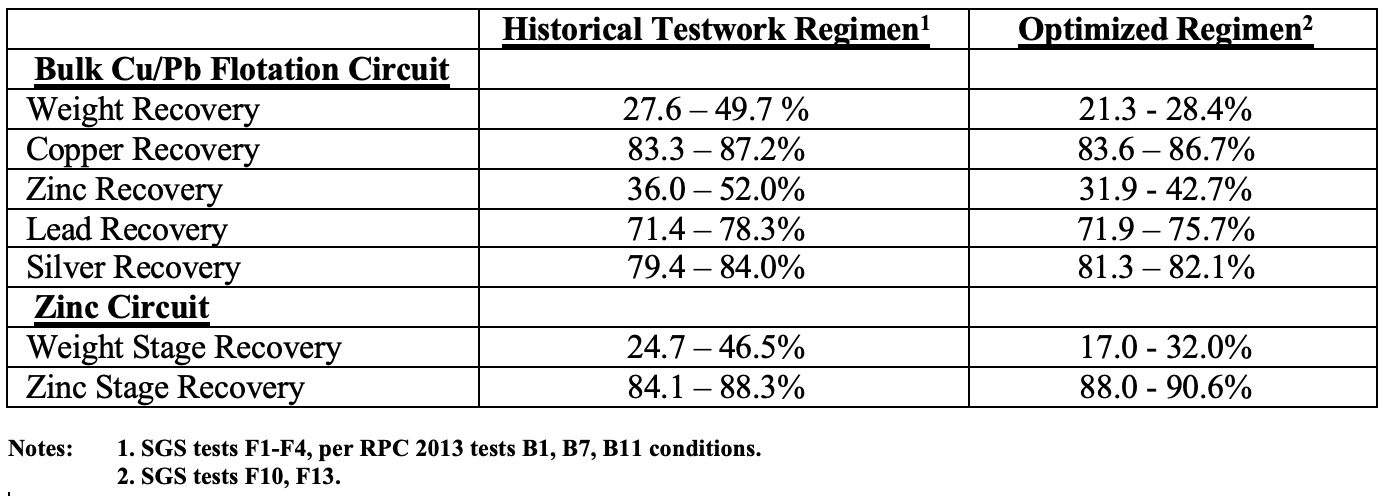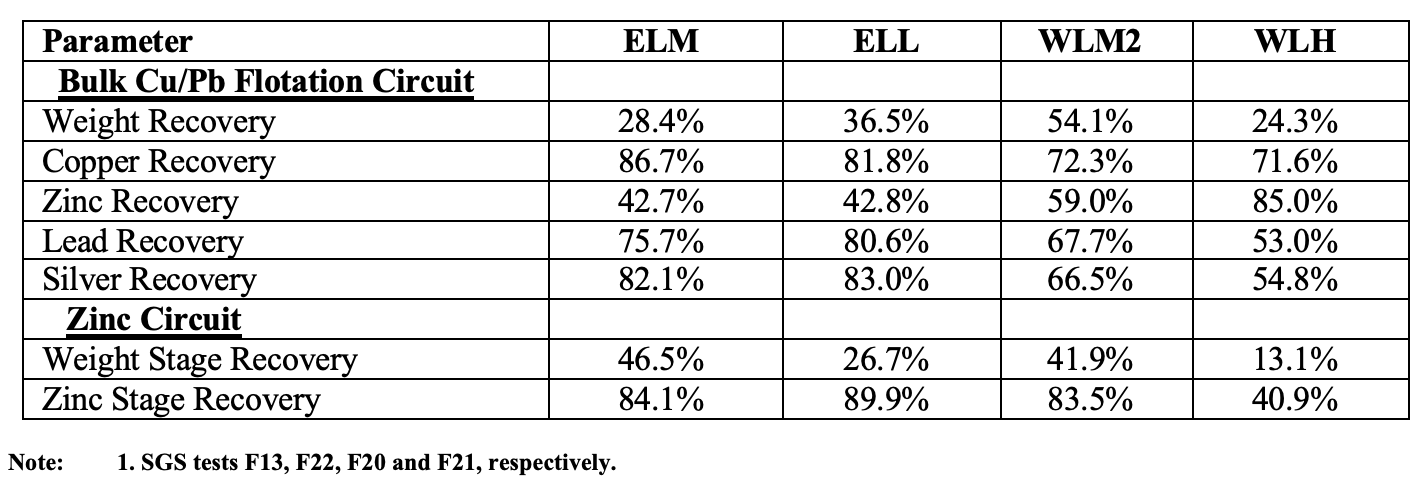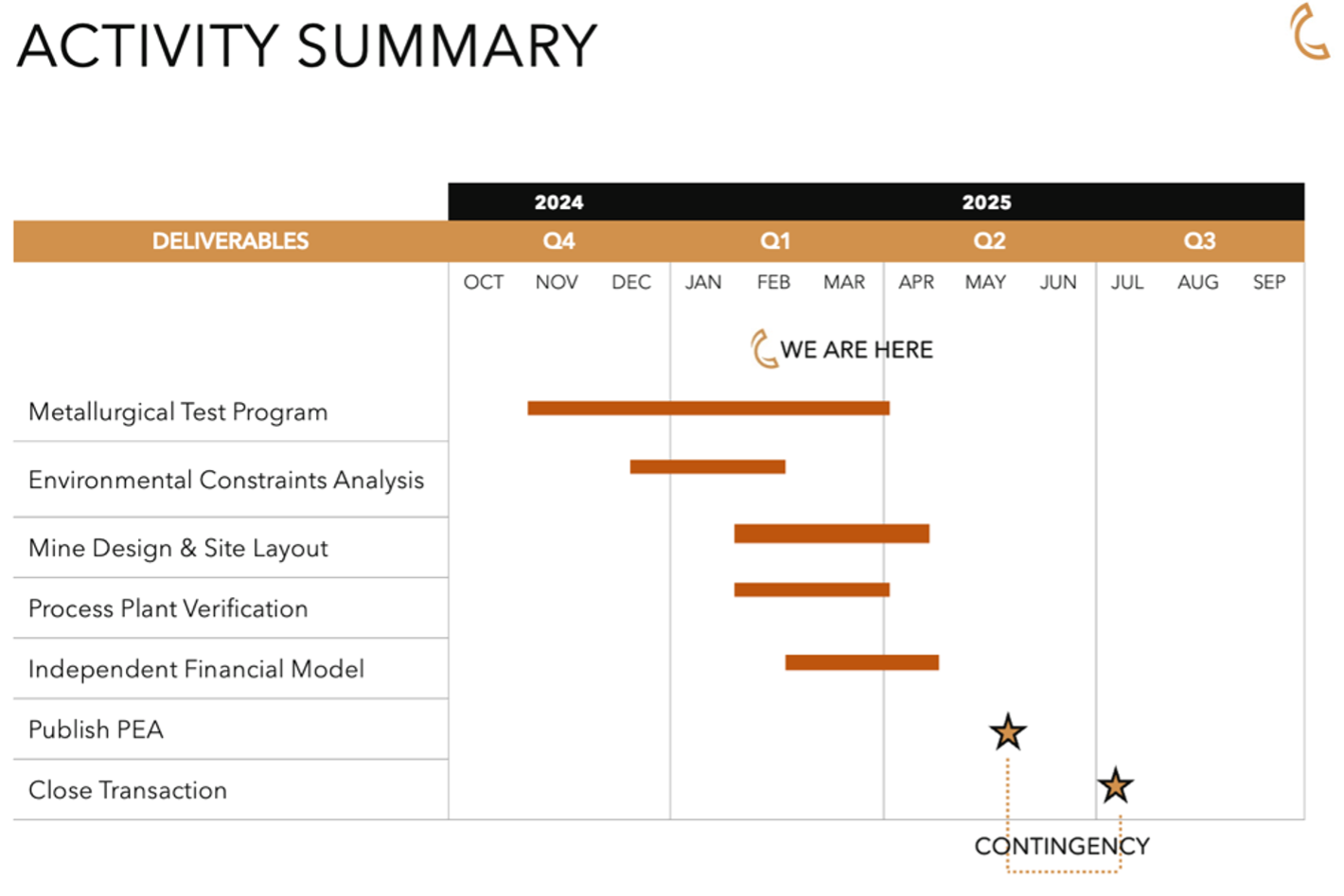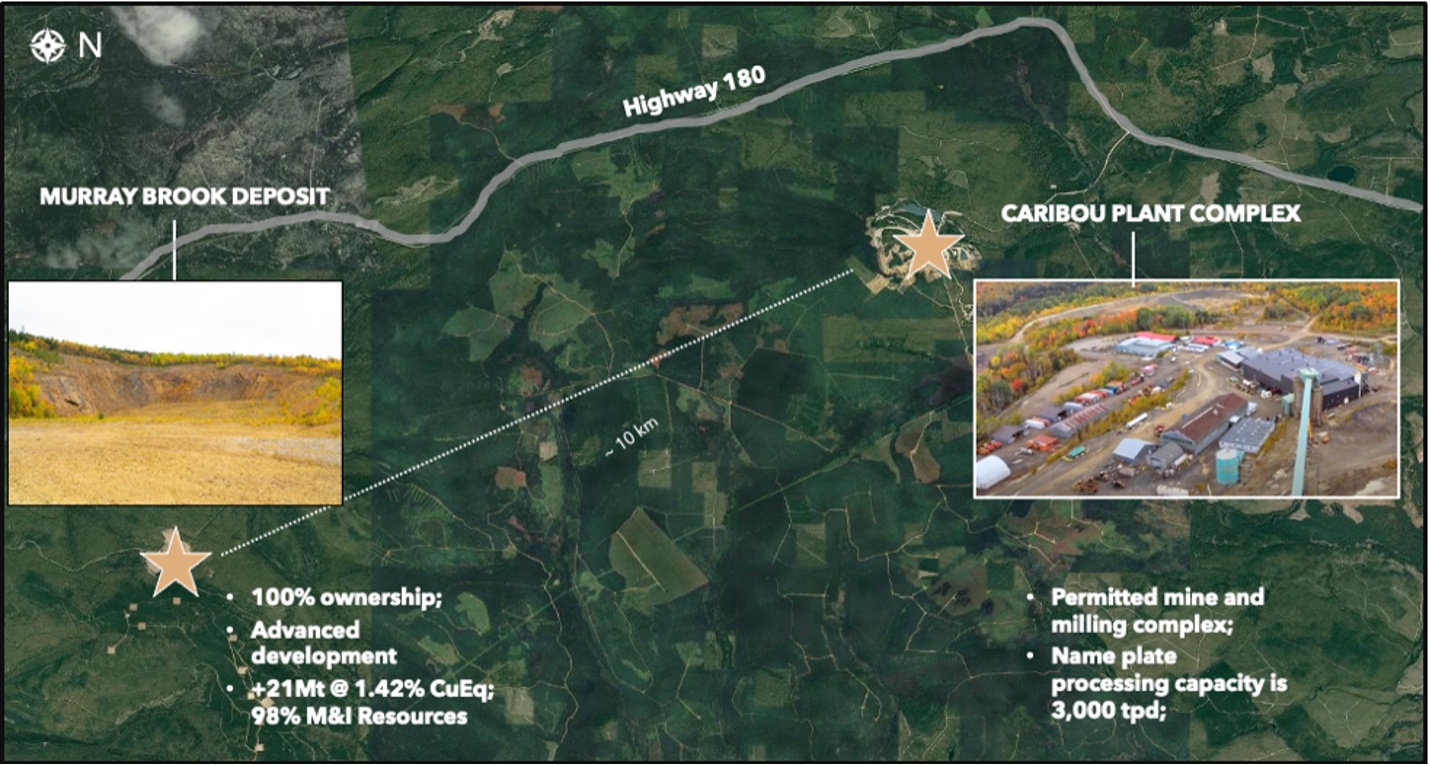Positive Rougher Flotation Results at Murray Brook Deposit
Toronto, February 10th, 2025 – Canadian Copper Inc. (CSE:CCI) (“Canadian Copper” or the “Company”) announced today positive results from its on-going metallurgical testwork program at SGS Canada Inc. (“SGS”) in Lakefield, Ontario. The purpose of this program is to support the acceleration and derisking efforts towards bringing the Murray Brook Cu-Zn-Pb-Ag Deposit into production using the existing Caribou Process Plant under the Combined Strategy.
Simon Quick, CEO of Canadian Copper, stated, “These positive rougher flotation results are a key step to the integration of the Murray Brook Deposit and the Caribou Process Plant. Composites selected for this program targeted early mine life material indicative of the planned plant feed grades and lithologic characteristics, which is designed to achieve three objectives. First, to forecast the Murray Brook Deposit recovery performance using the existing Caribou Process Plant circuits. Second, to identify and refine any needed Caribou Process Plant flotation circuit changes to execute our fit-for-purpose strategy under the Combined Scenario. Third, to develop accurate cost and design inputs for our upcoming PEA due in the H1, 2025.”
Flotation Testwork Overview
Approximately 600 kilograms of historical diamond drill core material was collected from four spatially distinct areas in December 2024 and sent to SGS where froth flotation tests simulating a plant flowsheet with a bulk copper/lead float scenario prior to zinc flotation were performed. The total weight was divided into four composite samples representing the early years of the Murray Brook Deposit’s preliminary mine plan. Table 1 presents the feed grades of the samples.
Table 1. Metallurgical Samples Feed Grades

The first set of rougher flotation tests were performed using one of the samples provided to SGS (ELM) and initially applying the grind size of 80% passing 25-30 microns and using the same reagents from an earlier test program completed in 2013. The flotation conditions were then modified from this baseline to optimize the metallurgical results. The differential results are summarized in Table 2.
Table 2. Comparative Rougher Flotation Testwork Results

Initial rougher testwork confirmed recovery of 80-85% of copper and 75-80% of lead would report into a bulk rougher concentrate. Achieving higher copper recoveries requires a much higher mass pull, with over 35% of the zinc then reporting to this product, prior to expected rejection from the bulk cleaning circuit. Concurrent silver recovery to this bulk concentrate was over 80%. Zinc recovery of the zinc units left in the tailings from the bulk flotation was typically in the 85-90% range, a level that is expected to be mostly upheld once the additional zinc units floated with the bulk concentrate would be released from its subsequent cleaning circuit and combined with the bulk rougher tails to make up the full zinc rougher feed stream.
The process used to optimize the results with the ELM sample, to achieve both a reduction in mass pull and of the zinc units reporting to the copper and lead bulk rougher concentrate, involved testing of different combinations and dosages of pyrite and zinc depressants along with the use of some alternate bulk (e.g. combined copper/lead) and zinc collectors. Per Table 2, metal recoveries to the bulk and zinc rougher concentrates were largely equal to or slightly improved compared to those obtained while using the initial reagent regime from 2013. These results could typically be achieved along with a lower mass pull to concentrate, indicative of better pyrite rejection.
The testwork program then sought to apply these optimum conditions to the three other samples provided at SGS, with minor adjustments to dosages in recognition to feed grade differentials. The comparative results for all the samples are summarized in Table 3.
Table 3: Rougher Flotation Testwork Results for All Samples Tested1

Work with the WLH sample was suspended before reaching a favourable outcome as it became evident from its flotation response that it represented oxidized material from the upper layer of the deposit. This material is excluded from the resource statement, and no further testing will be performed on WLH. Further optimization trials are on-going with samples ELL and WLM2.
Next Steps
Cleaning flotation testwork work using the products from these tests of the bulk and zinc circuits is planned for March and April 2025 to confirm reagent regimes for these circuits and probable concentrate grades, followed by completion of locked-cycle tests (LCT) to predict overall metal recoveries versus concentrate grade target.
The Company remains focused on delivering a Preliminary Economic Assessment in the first half of 2025, aligned with the anticipated schedule (see Table 4) for the Combined Strategy.
To date, the following activities are complete:
- Rougher flotation reagent regime optimization testwork;
- Ore hardness evaluation for SAG and ball milling;
- Plant debottleneck analysis to increase projected daily throughout over Caribou’s historical level of 3.000 tpd;
- Effect of the primary grind target size on metal recoveries;
- Murray Brook open pit optimization and design;
- Environmental constraints analysis required for Murray Brook site layout and haul road design.
Further work in progress includes mine scheduling, manpower estimation, tailings strategy, water treatment review, logistics, copper, zinc, and lead market review, closure plan, project execution team structure, and capital cost estimation.
Table 4: Schedule of Activities for the Combined Strategy

Funding Strategy
The Company continues to evaluate several financing options to support the purchase price and development of the Combined Operation, progressing through the engineering and provincial permitting stages. As the financial model and PEA progress in Q1 2025, the Company will solicit parties to participate in a competitive financing process.
To date, discussions include:
- Offtake financing;
- Royalty and precious metal stream opportunities;
- Canada Infrastructure Bank funding;
- Multiple options within Natural Resources Canada (“NRCan”) and their Critical Minerals Infrastructure Fund (“CMIF”);
- Partnerships with strategic investors;
- Surety bond providers;
- Project financing debt; and,
Figure A: Location Map of Murray Brook Deposit and Caribou Processing Complex

Qualified Person
Pierre Lacombe, P.Eng. is an independent Qualified Person as defined in NI 43-101. Mr. Lacombe is responsible for the technical contents of this Press Release.
About Canadian Copper Inc.
Canadian Copper is a Canadian-based mineral exploration company with a copper and base metals portfolio of historical resources and grassroots projects. The Company is focused on the prolific Bathurst Mining Camp (BMC) of New Brunswick, Canada. There are currently 102,271,319 shares issued and outstanding in the Company.

